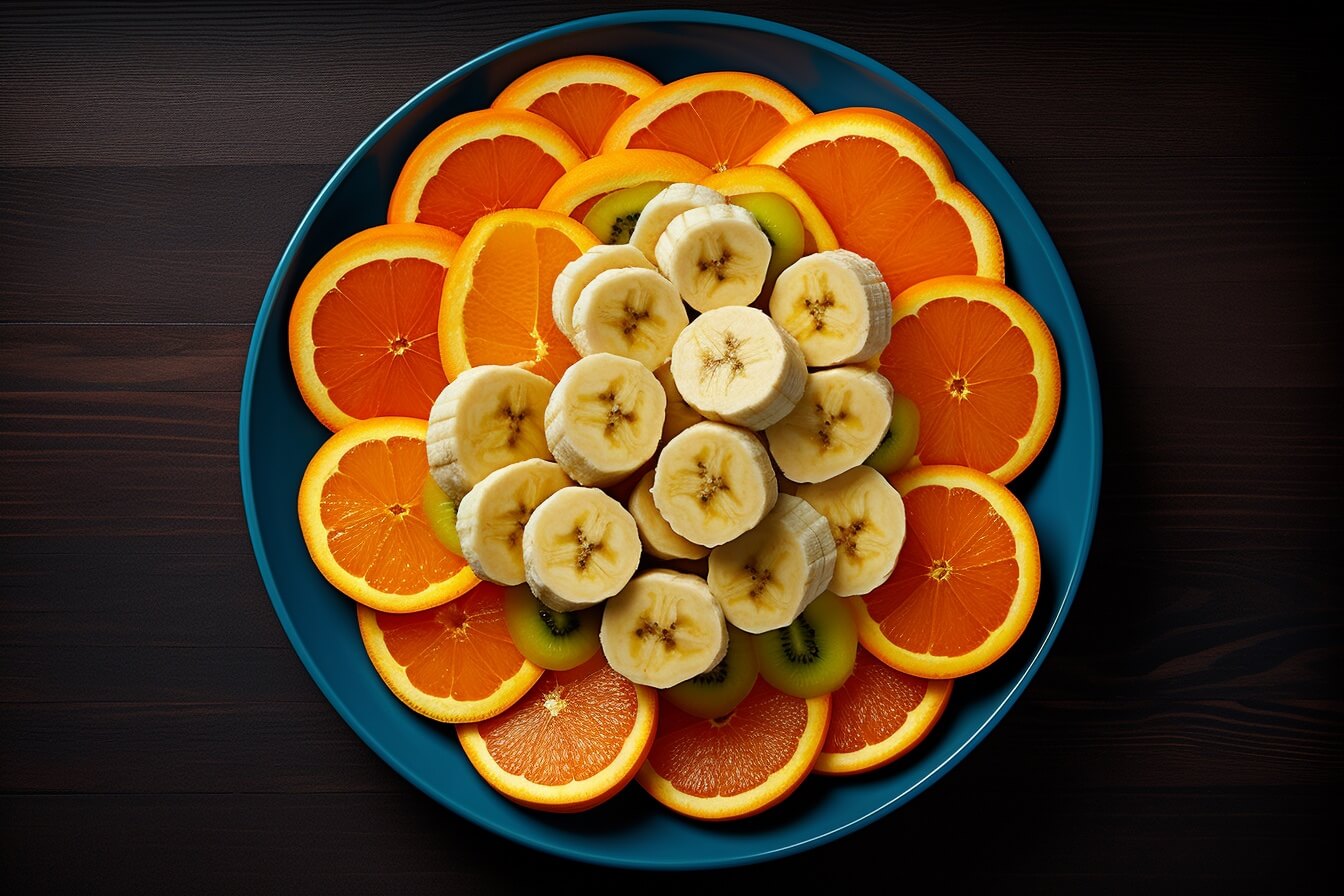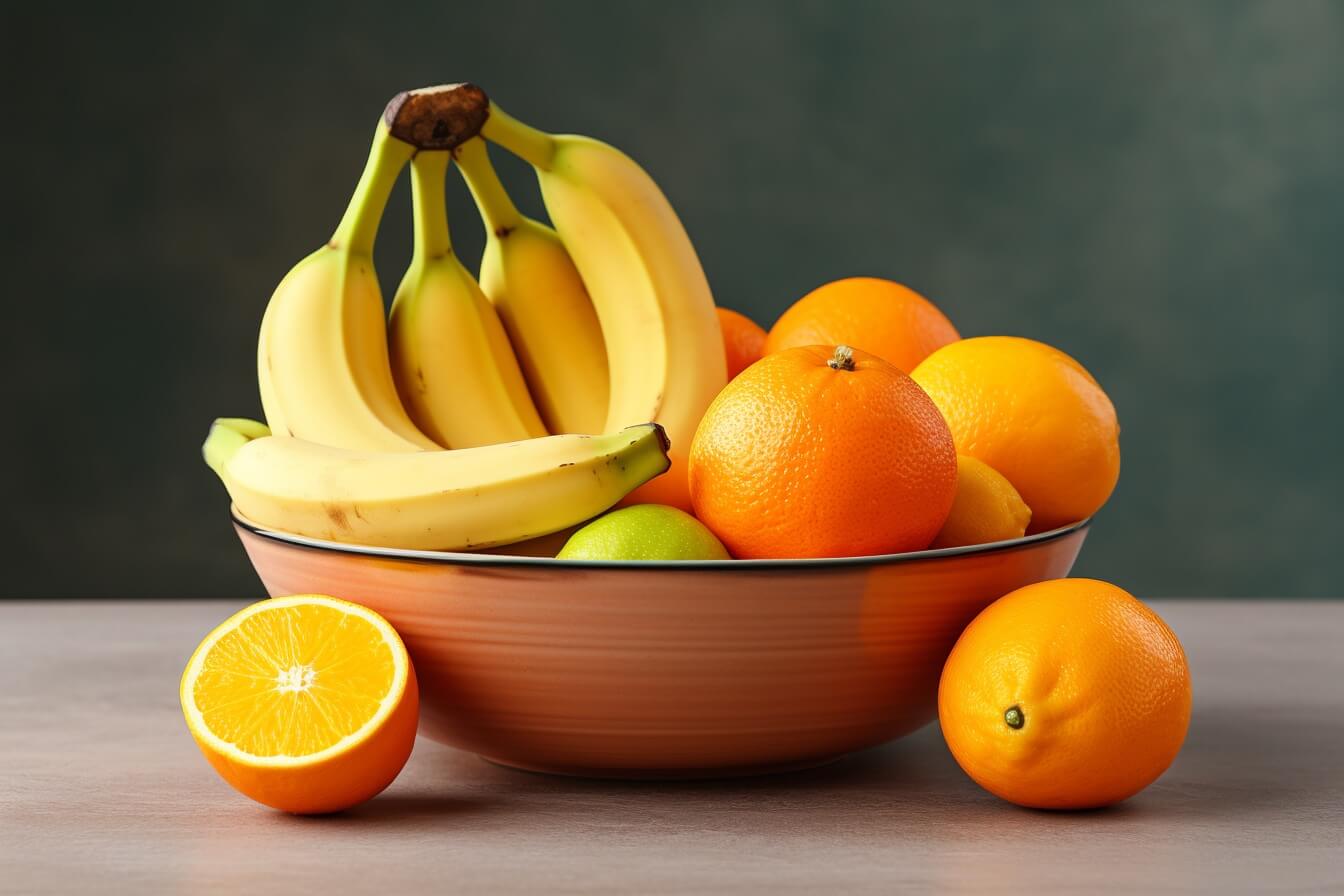Have you ever wondered if bananas are considered a citrus fruit? Nope, they are not. But if you want to know why, let’s peel back the layers and explore this question together.
Bananas are a fascinating fruit that we enjoy year-round, but they are often mistaken for being a citrus fruit due to their similar appearance. In this article, I will delve into the scientific classification of bananas, their growing seasons, and nutrient differences compared to citrus fruits.
I will also explore the question of whether bananas are acidic and discuss other fruits that are not classified as citrus. So, let’s dive in and learn more about the unique characteristics of this popular fruit.
Main Points
- Bananas belong to Musaceae botanical family while citrus fruits belong to the Rutaceae family.
- Bananas and citrus fruits are both a type of berry.
- Citrus fruits have more diverse nutritional value, containing nutrients like folate, calcium, vitamin C, as well as beneficial flavonoids.
- Bananas have a lower acidity level compared to citrus fruits and are a good source of potassium and vitamin B6.

Type Of Fruit
Did you know that bananas are both berries and fruits, while citrus fruits are actually specialized berries known as hesperidiums? This may come as a surprise to some, but it’s true.
The distinction between these fruits lies in their scientific classification as well as their origins. Bananas are ripened ovaries produced by a flowering plant, which means they’re a fruit, but they also contain multiple seeds that develop from the same ovary, which classifies them as a berry, according to McGill Office for Science and Society.
On the other hand, citrus fruits, such as oranges and lemons, are a modified berry with tough leathery skin called hesperidium, which is unique to the citrus family (Encyclopedia of Food and Health, 2016).
With this understanding of the type of fruit, let’s explore the scientific classification of bananas and citrus fruits.
Scientific Classification
The taxonomic classification for these two widely consumed edible crops differs greatly.
Citrus fruits, which include oranges, lemons, and limes, belong to the genus Citrus in the family Rutaceae. They are classified under the Domain Eukaryota, Kingdom Plantae, Division Magnoliophyta, Class Magnoliopsida, Order Sapindales, Family Rutaceae, and Genus Citrus (The Genus Citrus, 2020).
These fruits are produced by flowering trees and shrubs that originated in tropical and subtropical southeast Asia and have been cultivated for thousands of years (Nature, 2018).
On the other hand, bananas belong to the family Musaceae and are classified under the Domain Eukaryota, Kingdom Plantae, Division Magnoliophyta, Class Liliopsida, Order Zingiberales, Family Musaceae, and Genus Musa (Long Non-Coding RNAs in Plants, 2021).
Bananas also originated in southeast Asia (Nutritional Composition of Fruit Cultivars, 2016), but unlike citrus fruits, banana plants are not trees. Instead, they are considered herbs and grow from underground stems called rhizomes.
Growing Seasons
Moving onto the next topic of growing seasons, while both thrive in tropical and subtropical regions, bananas are known to grow year-round in contrast to citrus fruits having specific growing seasons.
Citrus trees require consistent warm temperatures, adequate rainfall, and fertile soil to produce fruit. Similarly, banana plants produce best in humid tropical climates and require ample fertilizer, water, and heat to grow properly, according to USDA.
Here are a couple differences to keep in mind:
- Citrus fruits require a consistently sunny environment, while bananas can grow in partial shade (Horticultural Sciences Department, UF/IFAS Extension).
- Citrus fruits have a specific harvesting season in winter, while bananas can be harvested throughout the year.

Nutrient Differences
In this section, I will compare the nutritional content of bananas and citrus fruits to highlight their differences.
Citrus fruits, such as oranges and lemons, contain higher amounts of citric acid and ascorbic acid than bananas.
Citric acid is a natural preservative that can help prevent microbial growth and spoilage, while ascorbic acid, also known as vitamin C, is a powerful antioxidant that can boost your immune system and protect your cells from damage (Mayo Clinic).
On the other hand, bananas are a great source of potassium, a mineral that helps regulate your blood pressure and protect your heart health (American Heart Association).
The table below presents USDA‘s average nutritional values for 100 grams of bananas and oranges, two popular examples of non-citrus and citrus fruits, respectively.
| Nutrient | Banana (100g) | Orange (100g) |
|---|---|---|
| Calories | 89 | 47 |
| Protein | 1.1g | 0.9g |
| Total Fat | 0.3g | 0.1g |
| Carbohydrates | 22.8g | 11.8g |
| Sugars | 12.2g | 9.4g |
| Dietary Fiber | 2.6g | 2.4g |
| Vitamin C | 8.7mg | 53.2mg |
| Potassium | 358mg | 181mg |
| Vitamin B6 | 0.4mg | 0.1mg |
As seen in the table above, bananas and oranges have different nutritional profiles. Here are some key differences:
- Calories: Oranges have 47% fewer calories than bananas, with 47 calories per 100 grams compared to 89 calories per 100 grams for bananas.
- Carbohydrates: Bananas contain about two times more carbohydrates than oranges.
- Vitamins: Oranges are richer in some vitamins, including vitamin C, vitamin B1, vitamin E, and folate. Oranges have more than 100% of the recommended daily amount of vitamin C, while bananas are richer in vitamin B2, B3, B5, and contain a low level of vitamin K. The amount of vitamin B6 in bananas is four times more than in oranges.
- Sugar: Bananas are richer in sugar than oranges.
Both types of fruits contain pectin, a soluble fiber that can promote regular bowel movements and improve your digestive health (Curr Allergy Asthma Rep., 2021).
According to Dr. David Katz, director of the Yale University Prevention Research Center, if you consider the concentration of a wide array of nutrients relative to calories, the orange is the most nutritious, followed by the apple, followed by bananas.
In the next section, I will explore whether bananas are acidic and how they can affect your digestive system.
Are Bananas Acidic?
Bananas have a pH level between 4.5 and 5.2, which indicates that they are low in acid, according to AARP. This makes them a great option for those with acid reflux or a sensitive stomach. However, it’s important to note that the acidity of bananas can vary depending on their ripeness and how they’re prepared.
Here are some key points to keep in mind when considering the acidity of bananas:
- Riper bananas are less acidic and sweeter, making them easier to digest for those who are sensitive to acidic foods.
- Cooking bananas, such as baking them or making banana bread, can also help reduce their acidity.
- Unlike citrus fruits, bananas don’t contain a lot of citric acid.
Additionally, bananas aren’t genetically modified, according to CropLife International, making them a natural and healthy choice for those looking to avoid GMOs.
What Are Other Non-Citrus Fruits?
While oranges and bananas are both healthy options, there are other even more nutritious fruits. None of the fruits listed below belong to the citrus family, but they each have their own unique flavors and health benefits that make them a great addition to a fruit salad.
- Mango: One cup of mango contains about 79 mg of vitamin C.
- Guava: A single guava fruit weighing 100 grams has over 200 mg of vitamin C content, which is almost twice as high as that in an orange.
- Papaya: One papaya contains about 95 mg of vitamin C
- Strawberries: One cup of strawberries contains about 89 mg of vitamin C.
- Pineapple: One cup of chopped pineapple contains about 79 mg of vitamin C.
- Kiwifruit: One kiwifruit contains about 84 mg of vitamin C.
Tomatoes, on the other hand, are technically a fruit but are often used as a vegetable. They are also not a member of the citrus family.
